Key in a search term below to search our website.
Key in a search term below to search our website.
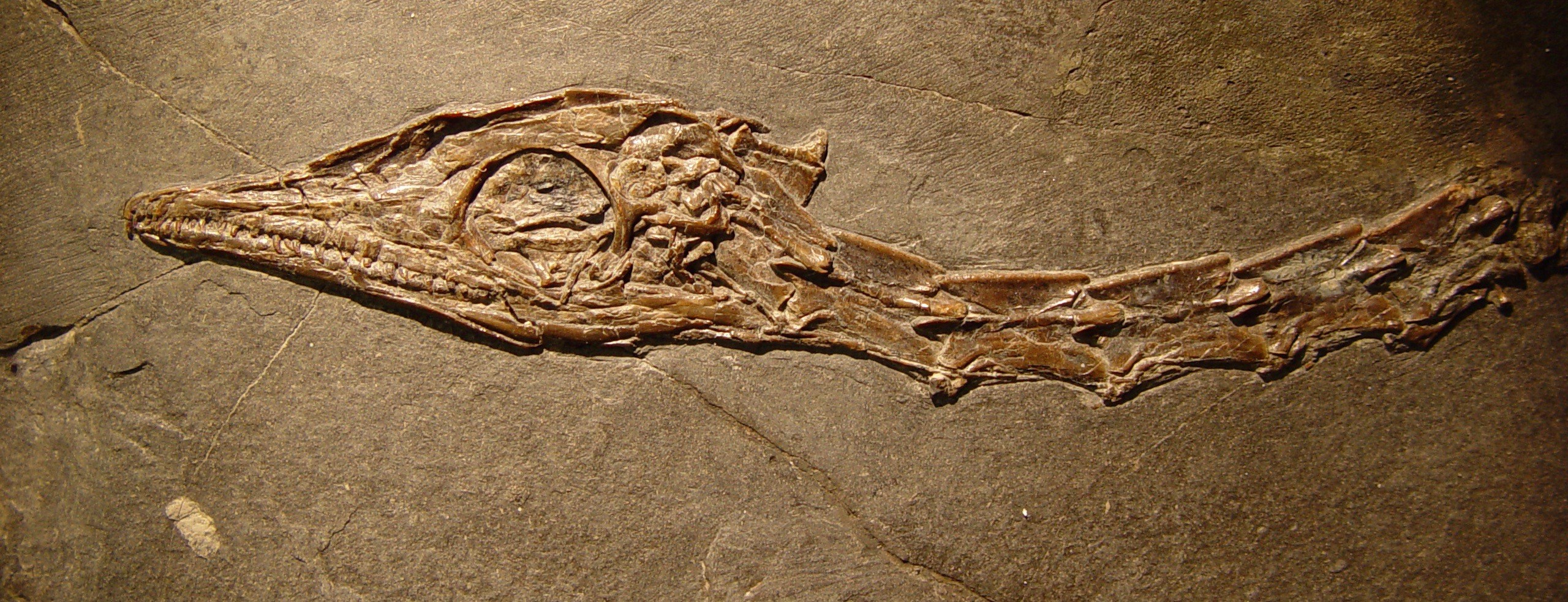
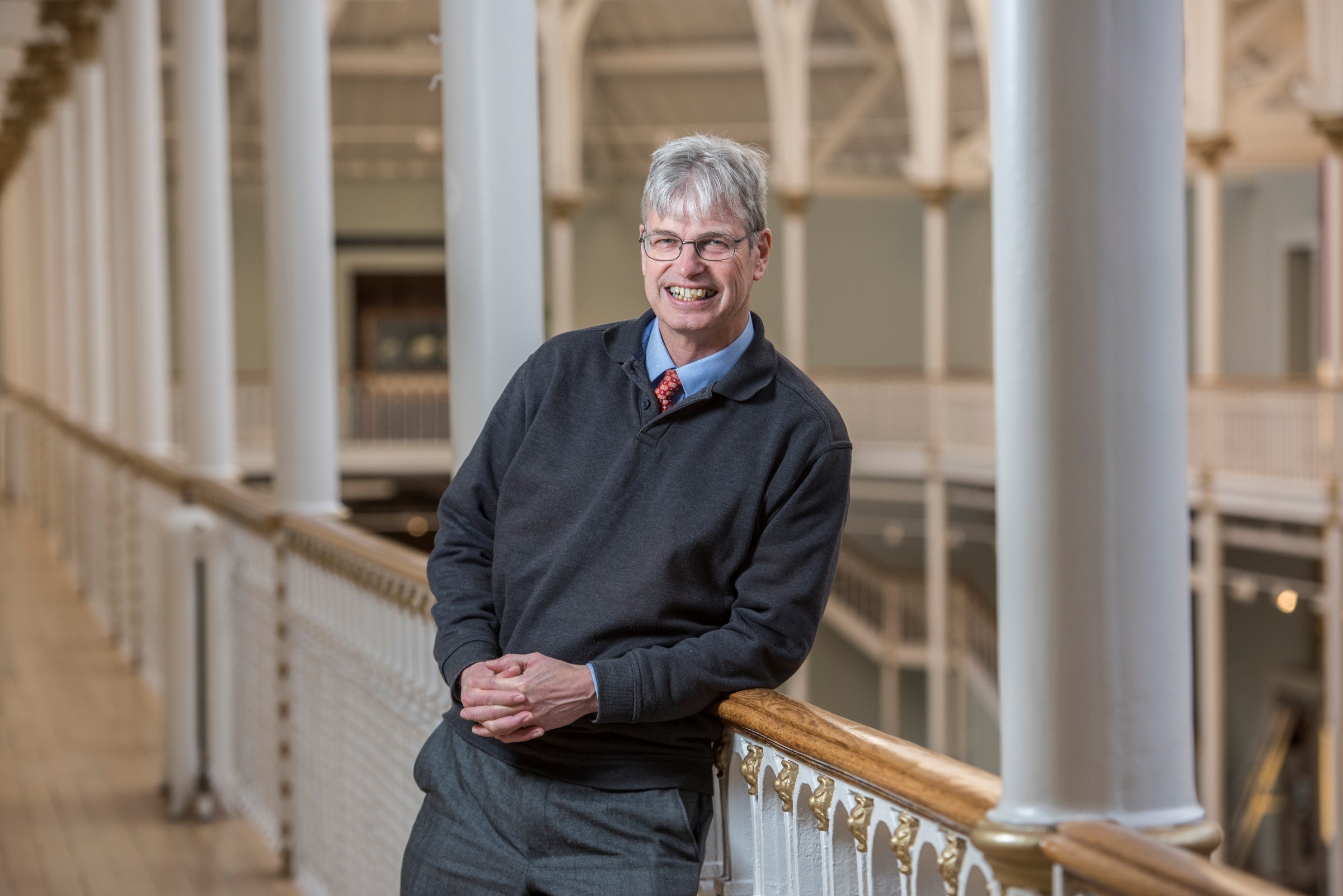
Nick Fraser is head of the Department of Natural Sciences and specialises in vertebrate palaeontology.
As an undergraduate at the University of Aberdeen, Dr Fraser studied zoology. He then moved to the university’s geology department for his doctoral research, studying the so-called Mesozoic fissure infills of the Bristol Channel area, focusing in particular on the lizard-like rhynchocephalians. Between 1985 and 1990 he held a postdoctoral fellowship at Girton College, Cambridge before moving to the States where he worked for 18 years at the Virginia Museum of Natural History. He returned to Scotland and National Museums Scotland in 2007. He is an Adjunct Professor in the Department of Geosciences, Virginia Tech and Honorary Fellow in Geosciences, Edinburgh University.
Dr Fraser’s research is interdisciplinary and centres on the Triassic period (250-201 million years ago). Collaborating with a number of colleagues worldwide, he has published extensively on Triassic faunas and floras, both terrestrial and marine. During his time in Virginia, Dr Fraser worked extensively at the so-called Solite Quarry – a locality quarry straddling the Virginia - North Carolina State line and which is best known for its abundant exquisitely preserved insects.
The Triassic is a critical period in earth’s history as it saw the origin of many of the major groups of modern animals, (including mammals, crocodiles, turtles and true flies) and is renowned as the time when the first dinosaurs walked the planet. At the same time the Triassic world was home to some of the most bizarre vertebrate animals ever known – including the marine tanystropheids with some members having necks longer than their bodies and tail combined. Dr Fraser has published widely on this particular group of reptiles.
Over the past 15 years Dr Fraser has collaborated with colleagues at the Institute of Vertebrate Palaeontology and Palaeoanthropology (IVPP) in Bejing, Peking University and the Field Museum of Natural History (Chicago) investigating some of these strange marine reptiles from the Middle Triassic of southern China. One particularly remarkable form is Atopodentatus that sports a strange hammerhead-shaped snout, while an early turtle, Eorhynchochelys, possesses the very characteristic beak-shaped skull of turtles but lacks the typical bony carapace.
Dr Fraser has also been involved in an exciting Scottish-based research programme focusing on the Jurassic vertebrates of Skye. This is another major collaborative project with scientists from the universities of Edinburgh, Birmingham and Oxford. It highlights the richness of Scotland’s fossil record and is providing key insights into the world of the dinosaurs and the rich diversity of vertebrates that inhabited their world
Most recently Dr Fraser has returned to the subject area of his doctoral studies – the British fissure deposits. Much still remains to be discovered and understood about the rich vertebrate assemblages that were originally discovered over 100 years ago in cave sediments that were exposed in limestone quarries. Now working with colleagues at the Natural History Museum, the National Museum of Northern Ireland and the University of Birmingham, Dr Fraser is investigating aspects of their age and depositional environment.
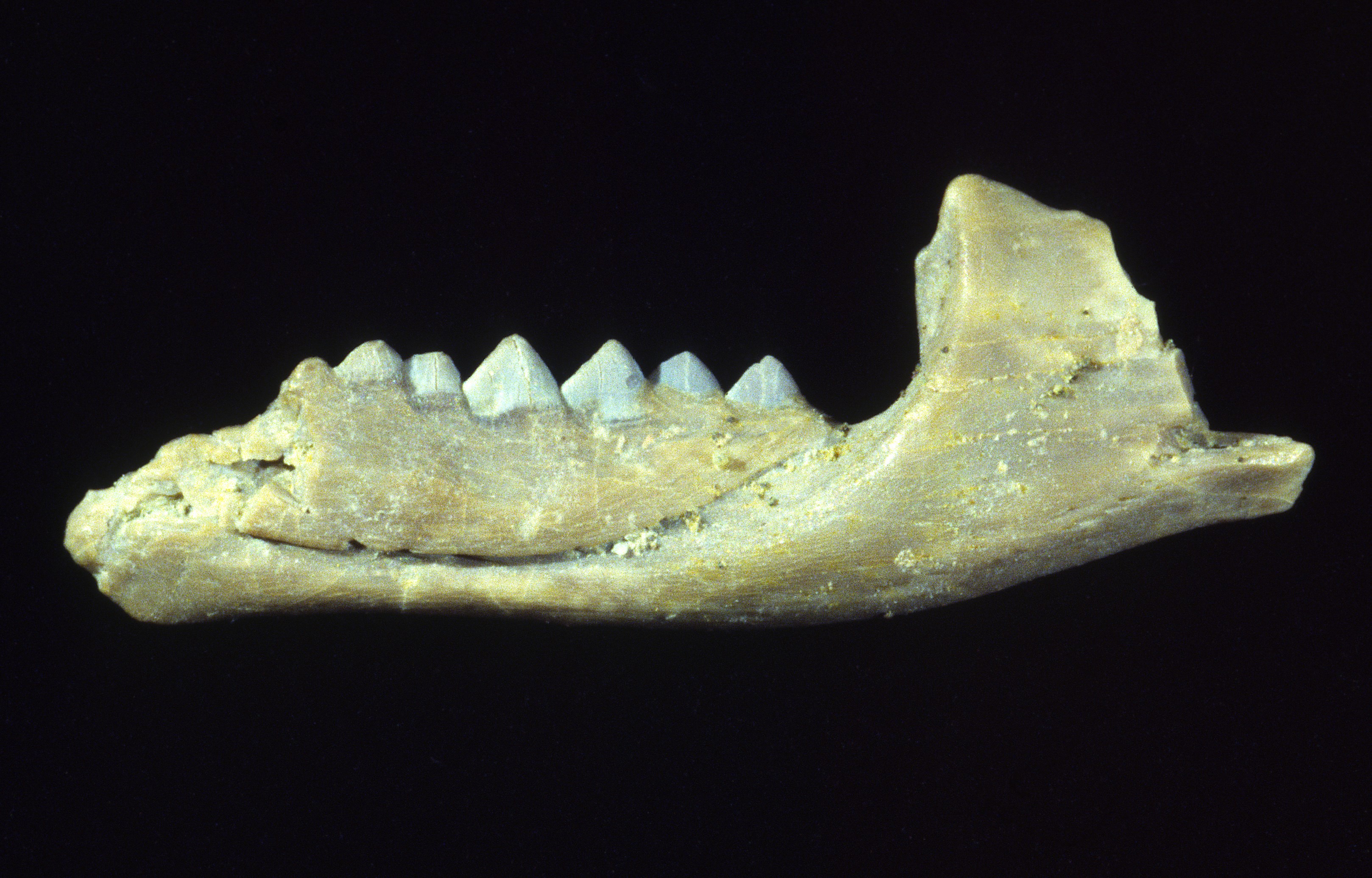
Above: left dentary of the Triassic rhynchocephalian Sigmala from Cromhall Quarry, Gloucestershire.
Wang, W., Spiekman, S. N. F., Zhao, L., Rieppel, O., Scheyer, T. M., Fraser, N. C., & Li, C. 2023. A new long-necked archosauromorph from the Guanling Formation (Anisian, Middle Triassic) of southwestern China and its implications for neck evolution in tanystropheids. The Anatomical Record. https://doi.org/10.1002/ar.25216
Jagielska, N., Challands, T.J., O’Sullivan, M., Ross, D.A., Fraser, N.C., Wilkinson, M and Brusatte, S.L. 2023. New postcranial remains from the Lealt Shale Formation of the Isle of Skye, Scotland, showcase hidden pterosaur diversity in the Middle Jurassic. Scottish Journal of Geology 59: https://doi.org/10.1144/sjg2023-001
Foffa, D., Dunne, E.M., Nesbitt, S.J., Butler, R.J, Fraser, N.C., Brusatte, S.L., Farnsworth, A., Lunt, D.J., Valdes, P.J., Walsh, S. & Barrett, P.M. 2022. Scleromochlus and the early evolution of Pterosauromorpha. Nature. https://doi.org/10.1038/s41586-022-05284-x
Jagielska, N., O’Sullivan, M., Funston, G.F., Butler, I.B., Challands, T.J., Clark, N.D.L., Fraser, N.C., Penny, A., Ross, D.A., Wilkinson, M. Brusatte, S.L. 2022. A skeleton from the Middle Jurassic of Scotland illuminates an earlier origin of large pterosaurs. Current Biology: https://doi.org/10.1016/j.cub.2022.01.073
Nesbitt, S.J., Stocker, M.R., Ezcurra, M.D., Fraser, N.C., Heckert, A.B., Parker, W.G., Mueller, B., Sengupta, S., Bandyopadhyay, S., Pritchard, A.C., Marsh, A.D. 2021. Widespread azendohsaurids (Archosauromorpha, Allokotosauria) from the Late Triassic of western USA and India. Papers in Palaeontology 7 (4): https://doi.org/10.1002/spp2.1413
Panciroli, E., Benson, R.B.J., Fernandez, V., Humpage, M., Martín-Serra, A., Walsh, S., Zhe-Xi L., Fraser N.C. 2021. Postcrania of Borealestes (Mammaliformes, Docodonta) and the emergence of ecomorphological diversity in early mammals. Palaeontology 64: https://doi.org/10.1111/pala.12577
Spiekman, S.N.F., Ezcurra, M.D., Butler, R.J., Fraser, N.C. and Maidment, S.C.R. 2021. Pendraig milnerae, a new small-sized coelophysoid theropod from the Late Triassic of Wales. Royal Society Open Science 8: https://doi.org/10.1098/rsos.210915
Walkden, G.M., Fraser, N.C., Simms, M.J. 2021. The age and formation mechanisms of Late Triassic fissure deposits, Gloucestershire, England: Comments on Mussini, G. et al. (2020). Anatomy of a Late Triassic Bristol fissure: Tytherington fissure 2. Proceedings of the Geologists’ Association 132: 127–137. https://doi.org/10.1016/j.pgeola.2020.10.006
Spiekman, S., Neenan, J. M., Fraser, N.C., Fernadez, V., Rieppel, O. Nosotti, S. and Scheyer T. M. 2020. Aquatic habits and niche partitioning in the extraordinarily long-necked Triassic reptile Tanystropheus. Current Biology 30: 1-7. https://doi.org/10.1016/j.cub.2020.07.025
Chun Li, Fraser, N.C., Rieppel, O & Xiao-Chun Wu. 2018. A Triassic stem turtle with an edentulous beak. Nature 560 (7719): 476–479. https://doi.org/10.1038/s41586-018-0419-1
For further publications see the National Museums Scotland Research Repository.
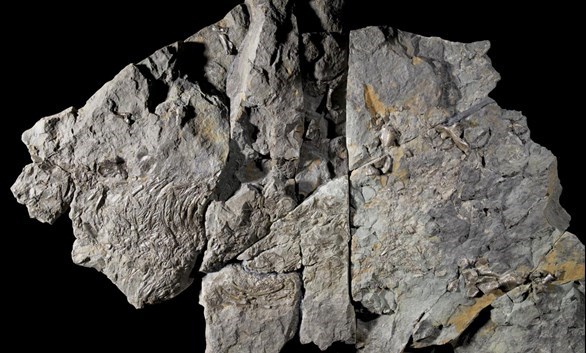
Explore the latest palaeobiology research with our Keeper of Natural Sciences, Nick Fraser.
Blog posts by Nick Fraser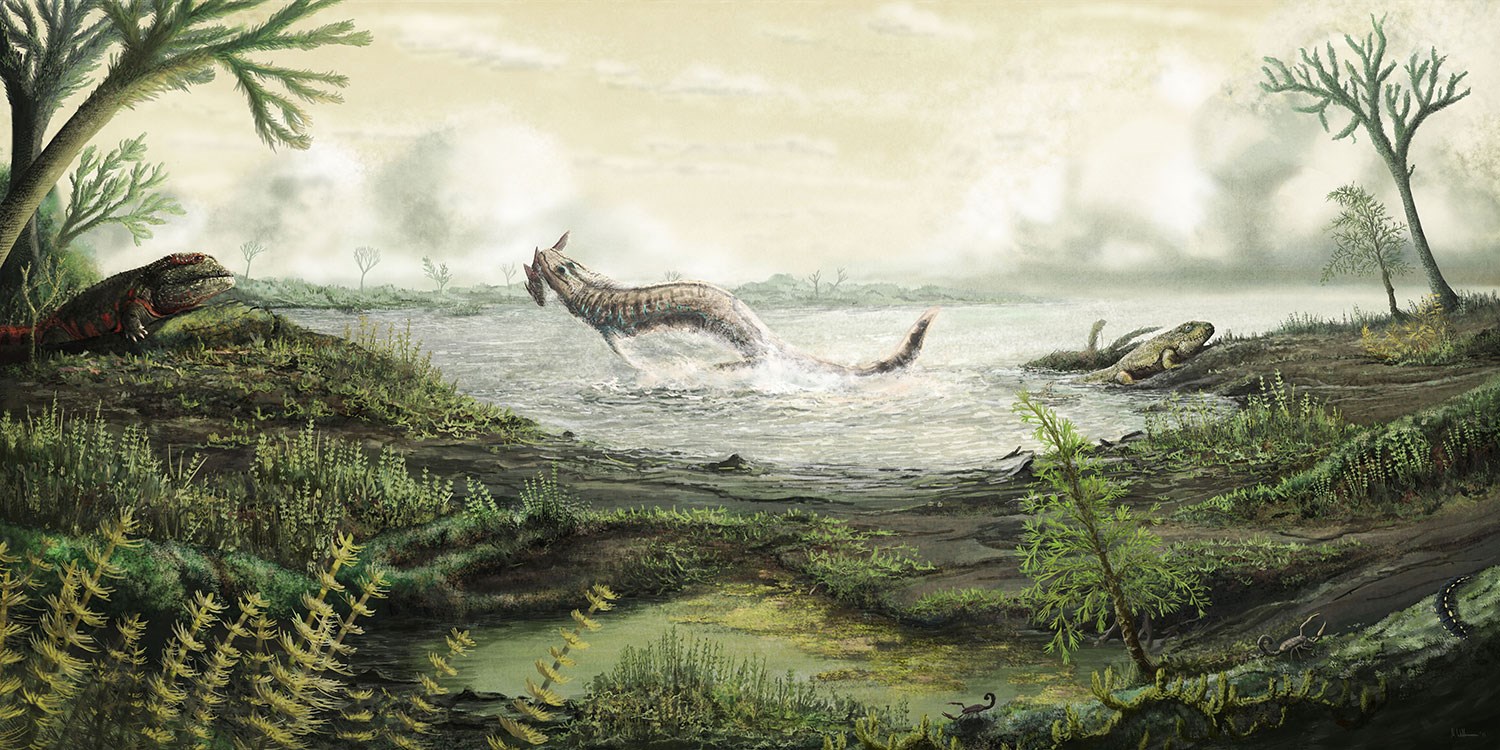
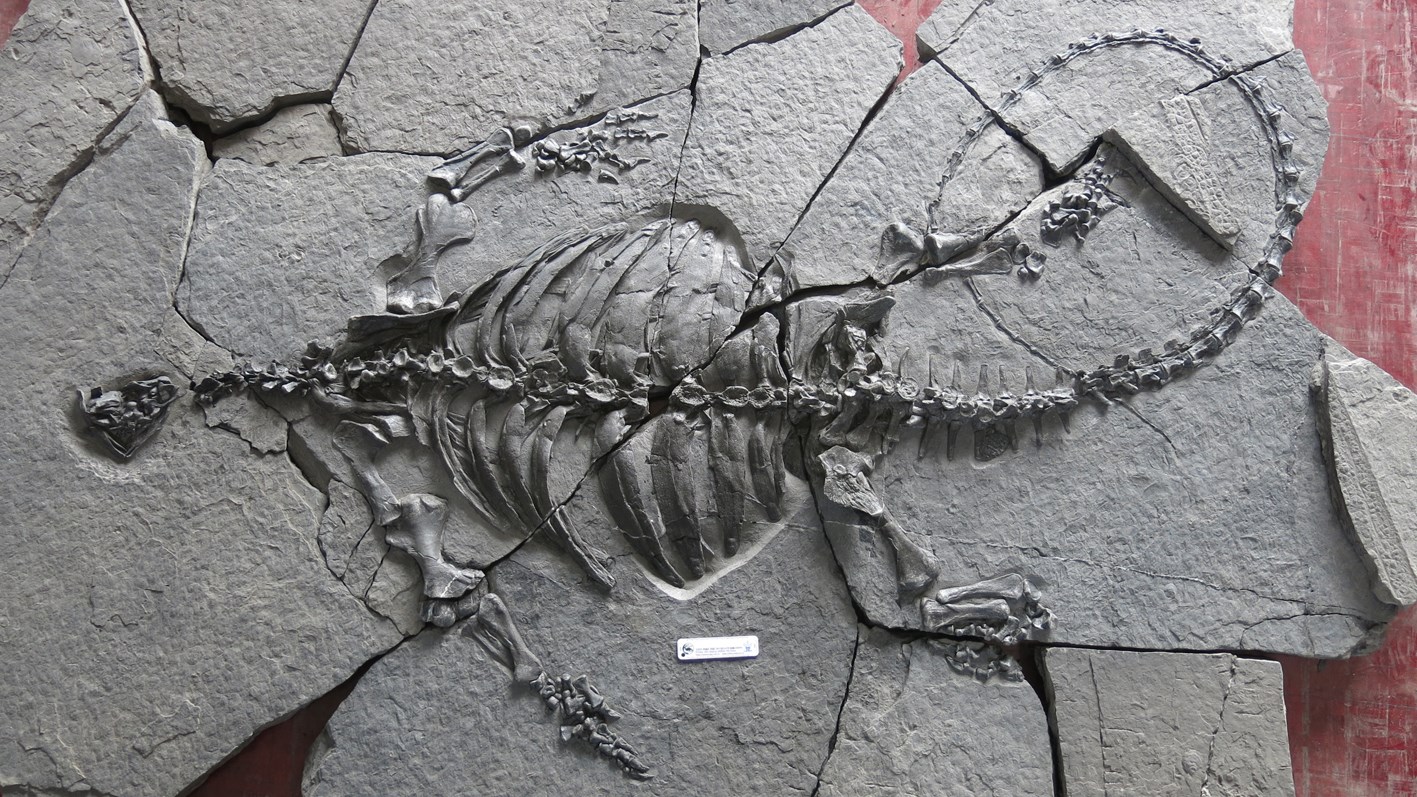
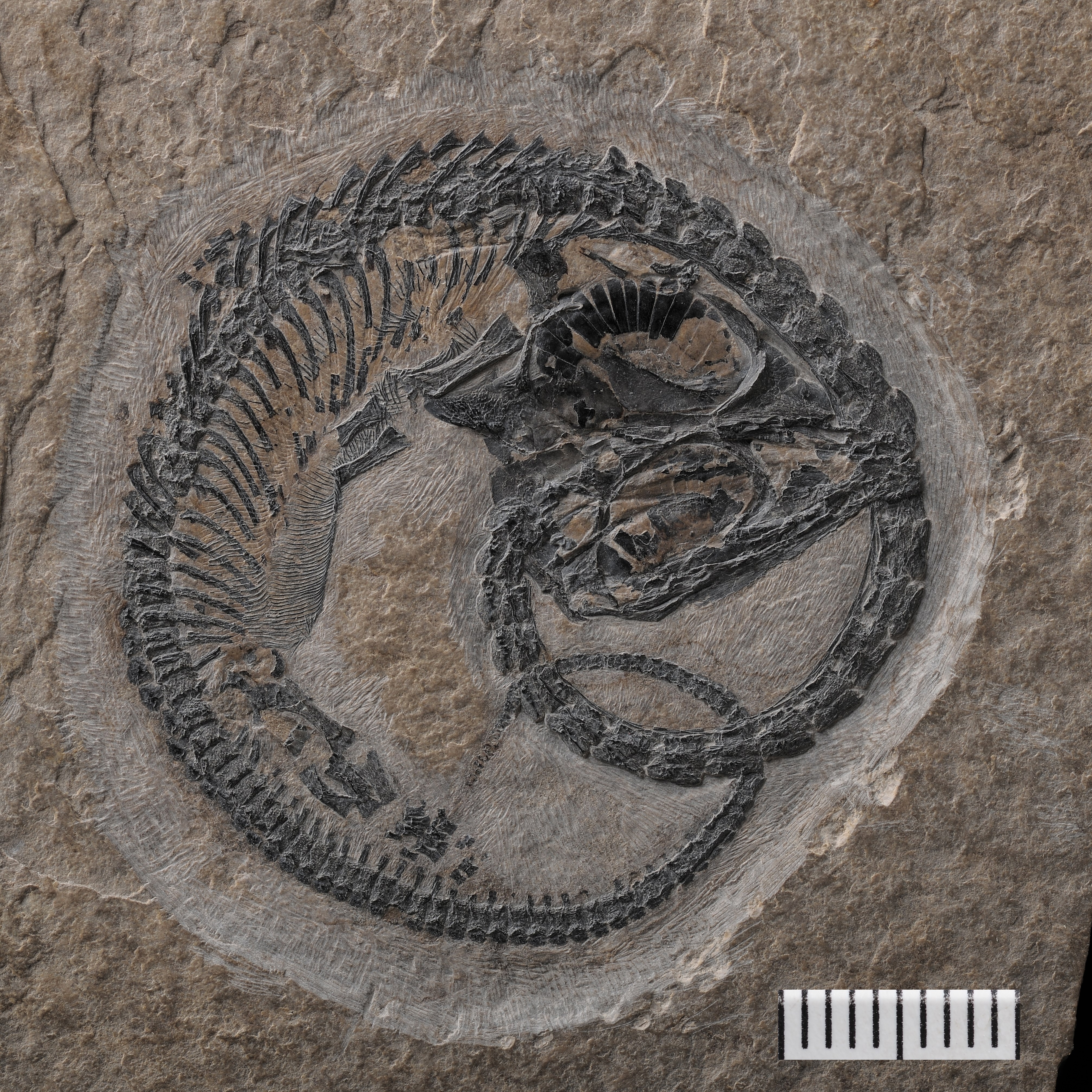
An exquisitely preserved fossil of an embryo of an extinct marine reptile described from China from 245 million years old rocks.
Fossil embryo